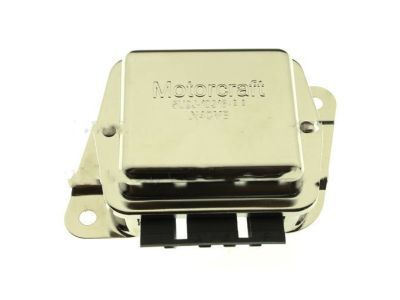

My Garage
My Account
Cart
Genuine Mercury Bobcat Voltage Regulator
Adjustable Voltage Regulator- Select Vehicle by Model
- Select Vehicle by VIN
Select Vehicle by Model
orMake
Model
Year
Select Vehicle by VIN
For the most accurate results, select vehicle by your VIN (Vehicle Identification Number).
1 Voltage Regulator found
Mercury Bobcat Regulator Assembly - Voltage
Part Number: FOPZ-10316-A$42.51 MSRP: $67.80You Save: $25.29 (38%)Ships in 1-2 Business Days
Mercury Bobcat Voltage Regulator
We provide a wide range of Mercury Bobcat Voltage Regulator at the best prices possible. If you need Mercury Bobcat Voltage Regulator, you can shop with confidence on our website. All our OEM parts come with a manufacturer's warranty and are delivered to your door step with a fast delivery service.
Mercury Bobcat Voltage Regulator Parts Questions & Experts Answers
- Q: What is the purpose and test procedure for an independent voltage regulator on Mercury Bobcat?A:This type of voltage regulator is stand-alone and is situated inside the engine compartment; it can be either mechanical or electronic, based on the date of the vehicle manufacture and its type. The mechanical type is a closed-unit with no settings; in case it is suspected faulty due to battery charging problems, a voltmeter check can be performed by attaching leads on the battery terminals and observing the reading with all the electrical loads switched off. The engine should be started and idled at 1800 to 2200 rpms for few minutes with the voltmeter reading as expected to be 1 to 2 volts high than the starting reading. If the difference measured is less than 1 volt or is more than 2.5 volts then it is probable that the regulator is defective and needs to be replaced. For the electrical loads, a drop of not more than one volt when they activate should be observed; if not, then the regulator should be replaced. Before disconnecting the voltage regulator, battery current should be disconnected and if the regulator is placed behind the battery the battery should be shifted towards the front side. Like in the electro-mechanical type, voltage regulation is done by transistors and diodes but the levels can be adjusted if the regulator has reached the normal temperature. It should also be noted that adjusting screw must be rotated with an insulated tool, as in the case of the mechanical type of the unit. The electronic type, which is available in the later models, is enclosed, and should not be disassembled; when it has a problem, the entire assembly has to be replaced. In particular, it is necessary not to connect an old regulator to a new alternator, and there are individual rules for working with sealed electronic regulators: check the correct connection and connection before testing or adjustment.


